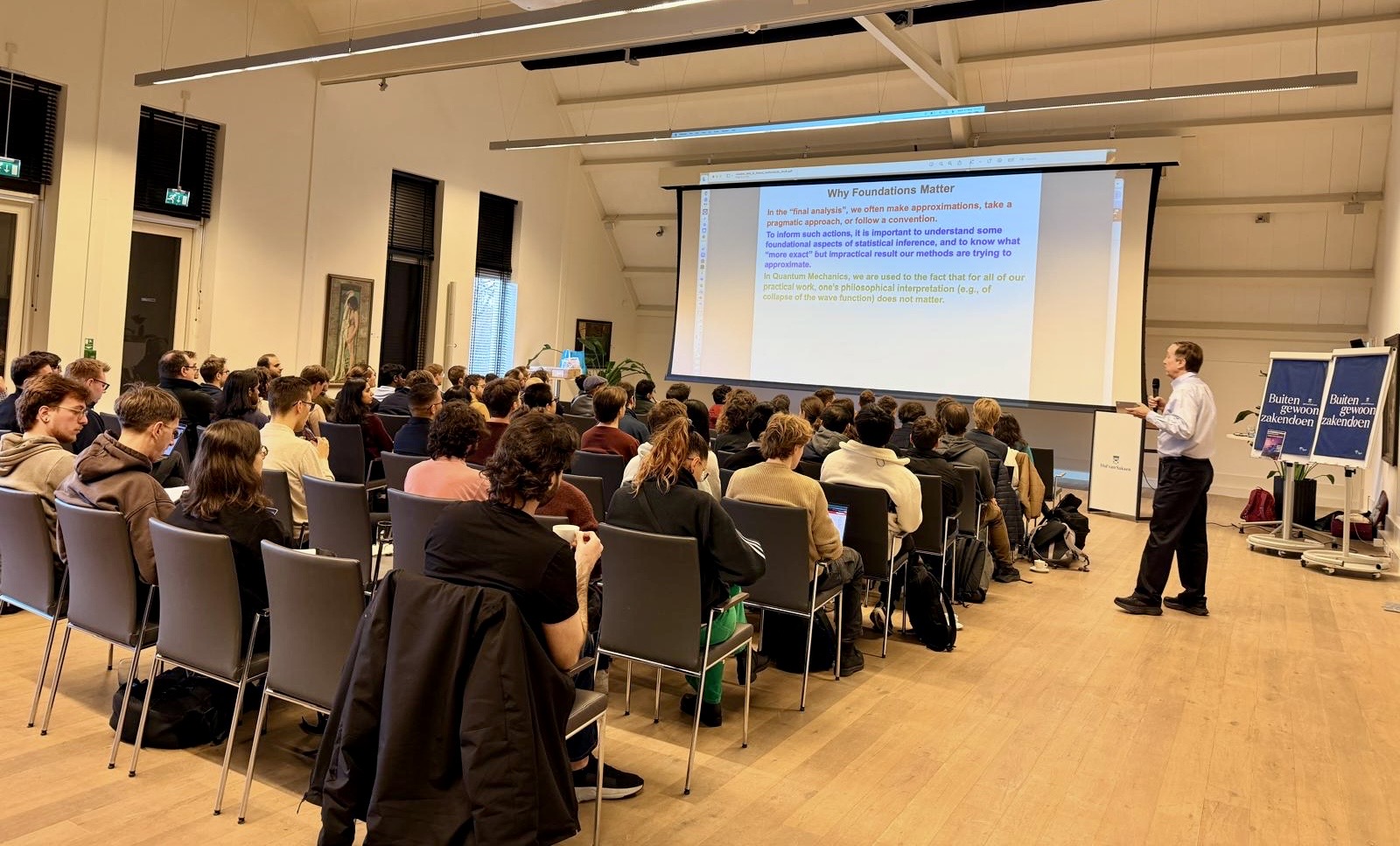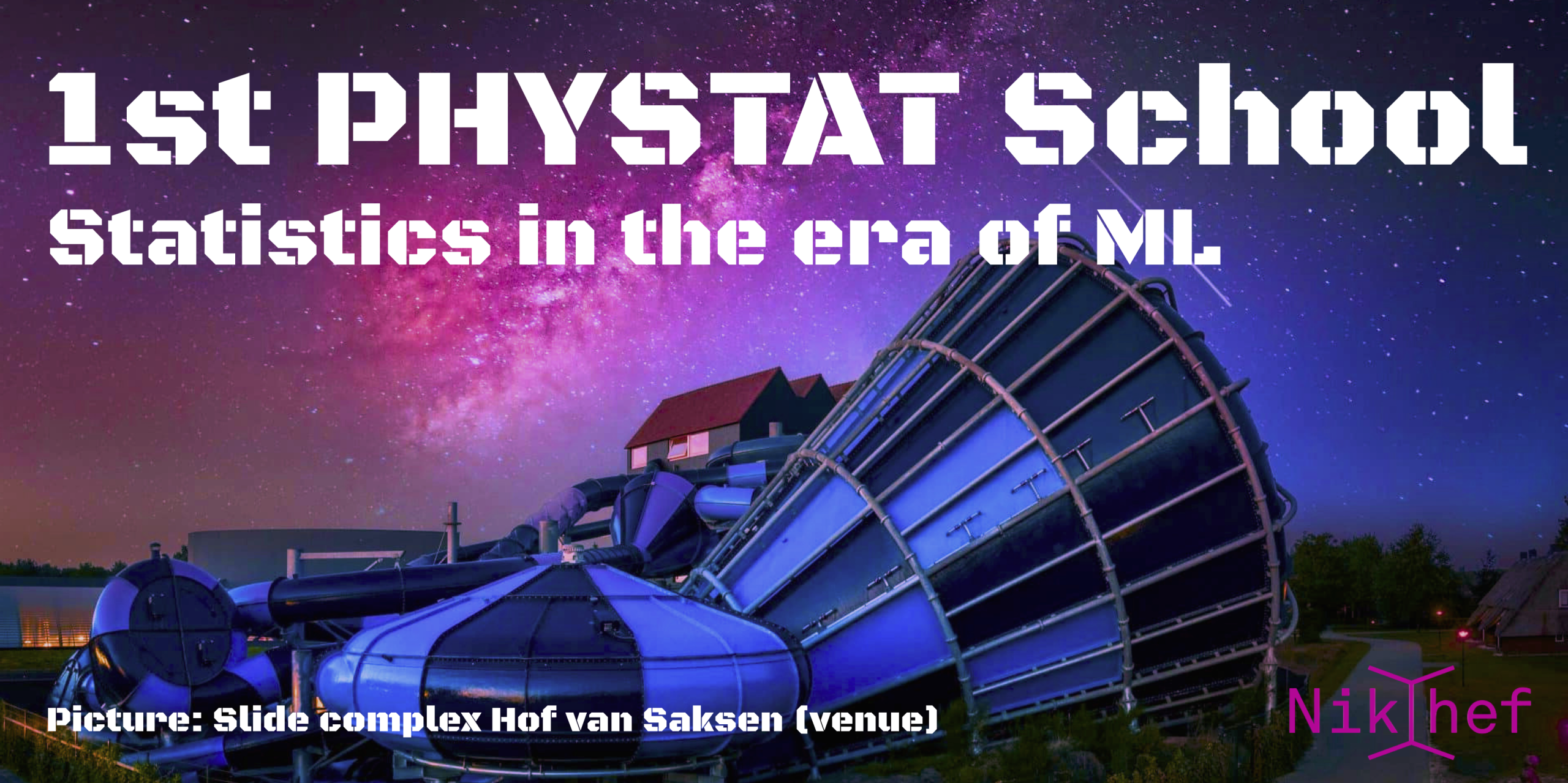This week, eighty PhD students and postdocs are participating in the first international PHYSTAT winter school on artificial intelligence and statistics, in The Netherlands, organised by Nikhef.
This week’s theme is “Statistics in the age of Machine Learning”. Artificial intelligence is also experiencing a rapid rise in particle physics, with self-learning algorithms being trained for data analysis for the institute’s experiments.

Nikhef now has considerable ambitions in this relatively new field of machine learning. ‘We want to underline this by organising this first edition of a rather prestigious school,’ says organiser Lydia Brenner of Nikhef, herself a specialist in the field of physical statistics.
Brenner: ‘Statistics is the basis for all machine learning tools, but in fact, little attention is paid to this in the training programmes. What exactly do these programmes do, how do you train them and how do you use them for meaningful analyses? Those are the questions this week.’
The course is intended for advanced PhD students and postdocs, with statistical experts from within and outside particle physics. The winter school is being held under the auspices of PHYSTAT, a European organisation for training physicists in statistical skills. Brenner, a physicist with the ATLAS experiment, is currently its chair.
Ten lecturers and speakers will be brushing up the participants’ skills in ‘Nooitgedacht’ over the coming days with lessons and practical assignments. Half of the lecturers are affiliated with Nikhef, as are about 15 of the participants. The rest come from all over the world, from Europe to Asia and Africa.
One of Nikhef’s data servers (aptly named “Plofkip” in typical Nikhef style) has been specially moved to ‘Nooitgedacht’ for this course week. The course participants will be given a login for this server and notebooks to work on. They will be able to work hands-on with automated data analysis on the server and complete learning assignments.
The meeting takes place at a holiday park in ‘Nooitgedacht’ near Assen, which offers sufficient space for the participants, lessons and practical assignments. There is also a large indoor water park for relaxation. Brenner: ‘Funnily enough, it looks a bit like a big scientific experiment, which is why we put that on the poster.’
